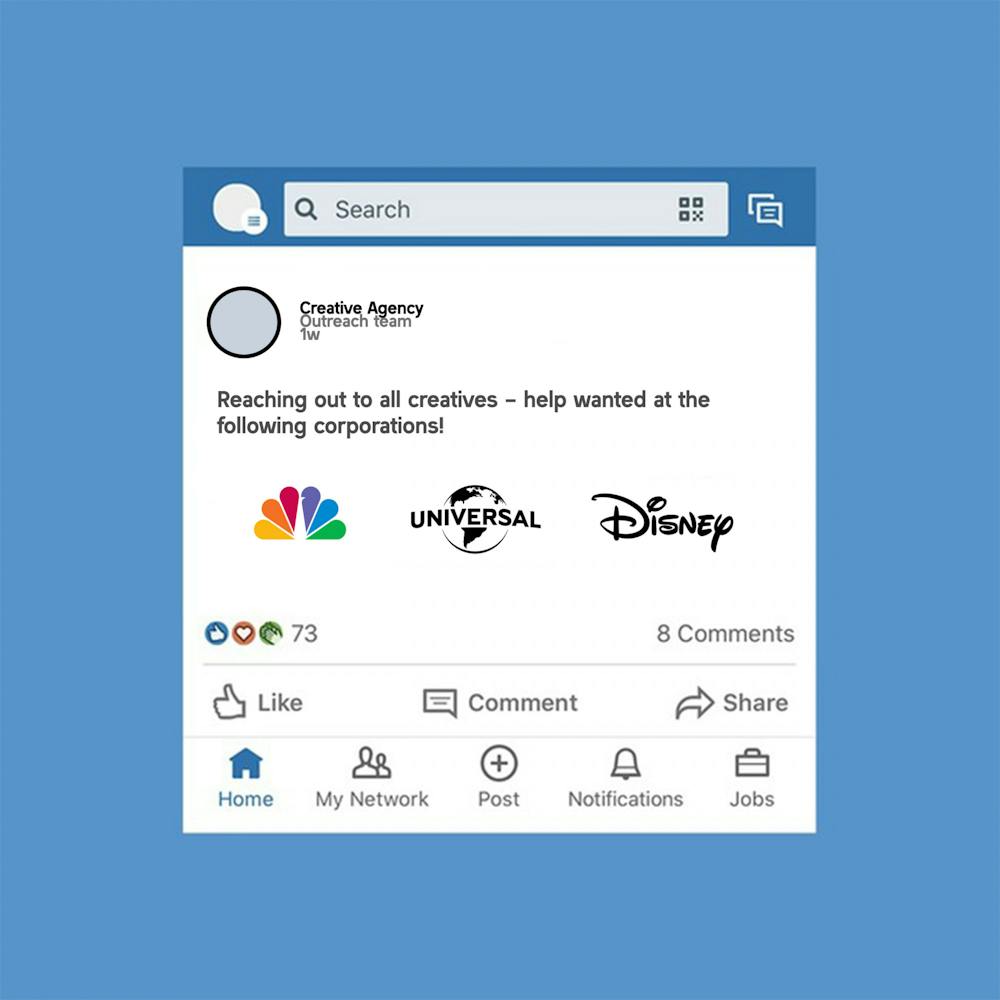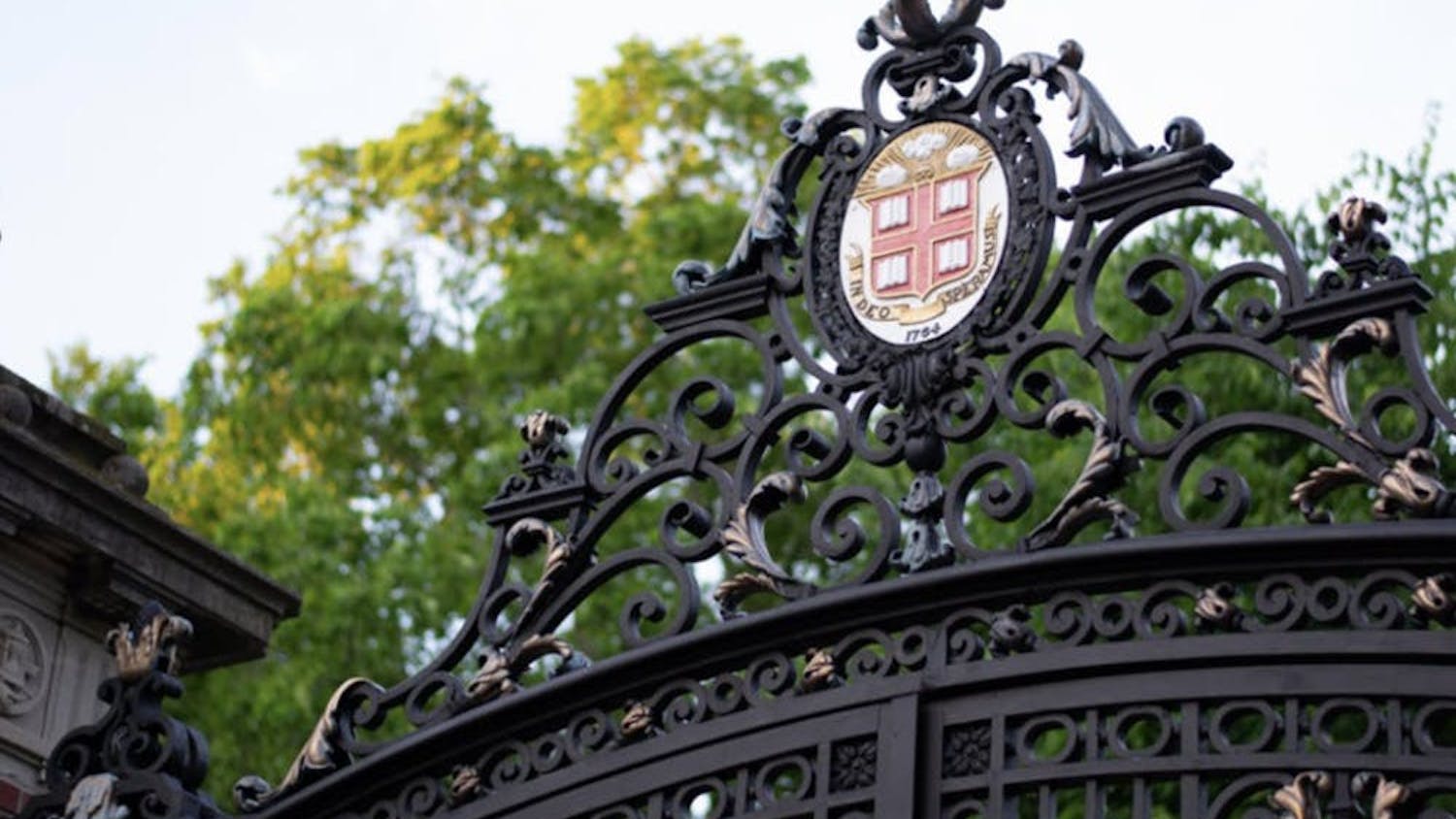As the spring semester begins, so does the internship search for students across campus. While many students interested in fields like business and tech may have already secured internships, the job search process for students interested in creative industries can present unique challenges.
“There’s definitely such a big presence of consulting and because there’s not a big presence of creative roles, it feels like ‘is this something that I should do?” said Mary Bibbey ’22, who recently interned with a Brown alumnus for a nonprofit that supports the use of sustainable textiles practices.
For the class of 2020, 47% of graduates working their first year out of college reported they had jobs in finance, consulting or technology. Students working in communications, media and arts made up nine percent of the total. This imbalance leads to a significant presence of recruiting events for consulting, computer science and finance, while recruiting for the arts ends up being more ambiguous, according to Aixa Kidd, deputy director of the University’s CareerLab.
“We’re dealing with a problem of student population and student interest,” Kidd said, referencing the relatively lower popularity of internships in the arts. “We have a smaller population at Brown that’s interested in these opportunities, and that impacts employers wanting to recruit here because they want volume.”
Recruitment season typically occurs in the fall for summer roles in finance, tech and consulting, with employers often hosting events and interviews with students. Typically, students in these roles receive offers of employment in December, almost three months before most creative fields begin posting open positions, according to Kidd.
CareerLab is aware of the cultural dynamics regarding internships on campus, Kidd said. “Unfortunately, we’re up against peer pressure,” she added.
“I’ve had conversations with people about how when you are choosing a school like Brown, you're in this expectation of reaching for the best,” Bibbey said. “If consulting and business roles are considered the best next step, then it feels like people are craving that elite role when it's misaligned with what they should do to be most fulfilled in life.”
Despite the social pressures present on campus, many students still choose to pursue other paths. “You have to be confident in what you do,” said Natasha Poster ’23, who has interned twice at Los Angeles-based record label The Darkroom.
“I’ve had a moment, too, where I thought, maybe I should’ve been an econ major,” Poster said. “But, I know that in the long run, I’ll be happier doing what I love (rather) than pursuing what everyone else wants to do.”
Securing funding is another complicating factor for students finding internships in the arts. In contrast to business and CS internships that frequently pay full salaries for work, students in the arts often receive small stipends that pale in comparison to the cost of living in media hubs like New York or Los Angeles, according to Maddie Groff ’23. Groff has found multiple remote internships through BrownConnect and worked in three separate roles this past summer to explore her interests and afford living in New York City.
“I didn’t want to spend my whole summer not getting paid in Los Angeles,” Groff said. “But during COVID, I had more freedom where I could work on multiple things.”
To assist students with low and unpaid internships, CareerLab offers its summer LINK program, which awards roughly 120 summer stipends to students pursuing unpaid or low-paid internships, according to its website. One often misunderstood feature of the program is that students need to secure work before applying for LINK grants, Kidd said. Rather, they only need to be in the process of applying to a low-paying position to meet the requirements.
Adding to the difficulty of finding an internship in the arts is the lack of outreach to students from art and media organizations, Kidd said. Whereas large companies have the resources to send recruiters to campus, students in the arts often have to reach out to organizations themselves, Kidd added.
Media and artistic organizations “don’t recruit in the same way as (computer science), consulting or banks. They don’t have the money or staff, so we have done the outreach for them,” Kidd said. CareerLab regularly communicates with alumni in the arts to set up Bruno Internships, roles where two of the final candidates must be Brown students. Past opportunities have included jobs with local film festivals, art museums and media organizations.
“Brown resources have been helpful in finding internships,” Groff said. “But, I wish that they were more widely promoted. The resources exist, but I don’t think they do enough to help students (in the arts) in the way they do with STEM students.”
“At a high level on campus, there could be a bigger presence of the paths to take to find these other opportunities,” Bibbey said. “There’s such a dominating presence on Handshake and BrownConnect of business roles.”
Other students find more success managing job outreach efforts on their own. Poster got her first internship in the music industry by cold messaging an alumni of her high school who ran The Darkroom, the label that signed Billie Eiliish. She has also capitalized on the connections she developed in Los Angeles to pursue other internships.
“Showing that you’re passionate about something and continuing to follow up, even if you’re being annoying, is how I made sure that these opportunities came to fruition,” Poster said. In addition to messaging alumni on LinkedIn, she also keeps in contact with peers doing similar work at other universities.
For younger students without existing networks to reach out to, CareerLab hosts an internship matching program for students looking to work in media in Los Angeles. Students apply and then are matched in internships at documentary, film and audio production companies, Kidd said.
“We’re trying to get the word out that there are many opportunities in the arts — they’re just later,” Kidd said. “Connections are key to finding open opportunities in media and the arts, and we’ve focused mainly on alumni and parent connections.”
Students have said that the dynamic nature of creative work often makes it difficult to provide structural support for students. For example, theater companies may not know how many interns they need until a few months before summer shows, Groff said.
“I think it's good practice because the nature of media and arts is you never really know exactly what you’re doing,” Groff said. “It’s always going to change if you're creative, so the silver lining of this work of looking for an internship being taxing is that’s what life is once you graduate college.”





